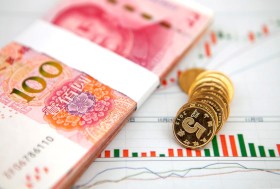The Chinese yuan is continuing its gains against the US dollar to kick off the trading week. The yuanâs strength was buoyed by the central bank pumping more liquidity into the system and leaving interest rates unchanged for the fourth consecutive month. After breaking below the seven against the greenback, the yuan has been steadily testing 6.9. How much better can it get for the currency?
On Monday, the Peopleâs Bank of China (PBoC) confirmed in a statement that it would roll over maturing $100.74 billion in maturing one-year medium-term lending facility (MLF) loans to banks. The PBoC kept these medium-term loans at 2.95%, which has been the rate since April.
Officials note that the rollover was an isolated MLF operation for the entire month to meet market demand. They also confirmed that it had injected an additional $720 million through seven-day reverse repurchasing agreements, as well as keeping the borrowing costs low.
This comes as PBoC head Yi Gang told the press that the central bank will be tapering its ultra-aggressive campaign to support the world’s second-largest economy due to better-than-expected data.
Meanwhile, analysts are anticipating that the central bank will leave the nationâs benchmark loan prime rate (LPR) unchanged on Thursday since the MLF is its guiding market mechanism.
Despite lamenting on central banksâ quantitative easing (QE) efforts in recent months, has the PBoC emulated a government bond-buying program? According to the new China Central Depository & Clearing data compiled by Bloomberg, the central bank might have acquired government bonds from domestic financial institutions last month. The numbers revealed that sovereign bonds held by âotherâ investors, which includes central banks, climbed by about $28 billion to $260 billion last month.
Analysts think that if the PBoC did execute this trade that it was part of its efforts to âdirectly finance the real economy.â Others say that foreign central banks may have been the culprit by tapping their currency swap agreements.
In other news, the central bank is continuing to push greater adoption of the yuan in international markets to facilitate more trade and investment in global commerce. Authorities presented the initiative in the latest annual RMB Internationalization Report, officially adding to previous comments earlier this summer when officials recommended an increased prevalence for the yuan in cross-border trade.
The USD/CNY currency pair fell 0.18% to 6.9375, from an opening of 6.9503, at 13:11 GMT on Monday. The EUR/CNY dipped 0.09% to 8.2241, from an opening of 8.2316.
If you have any questions, comments, or opinions regarding the Chinese Yuan, feel free to post them using the commentary form below.
Chinese Yuan Gains As PBoC Pumps More Liquidity Into System
